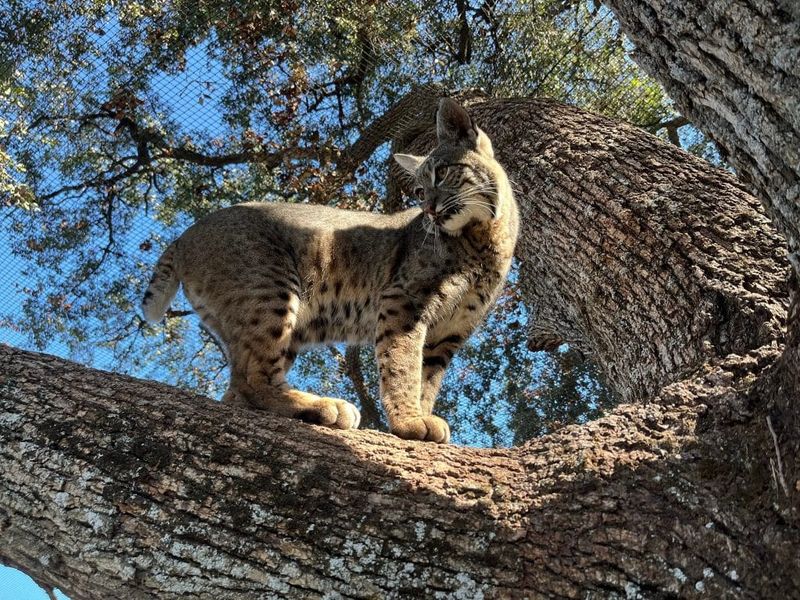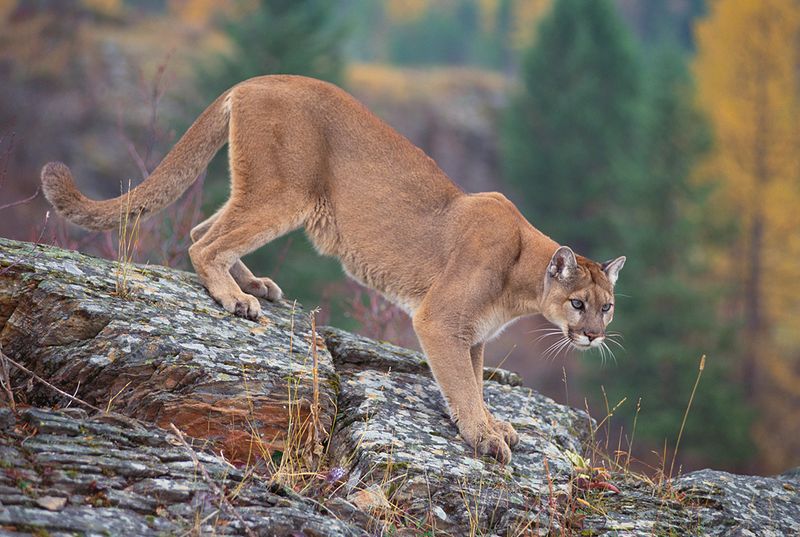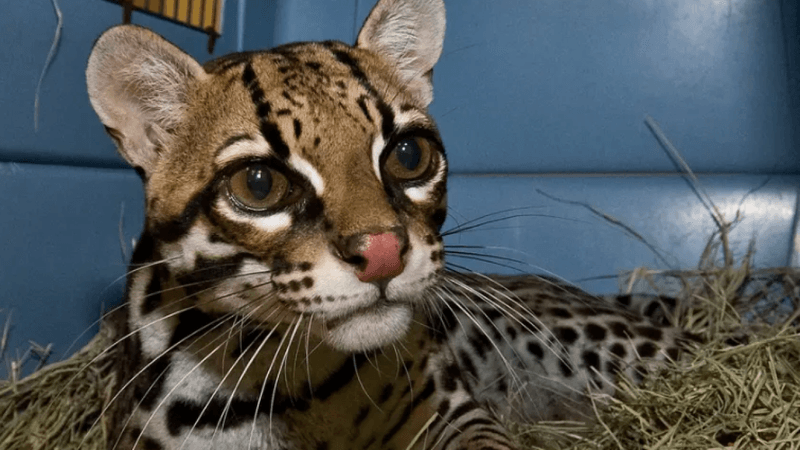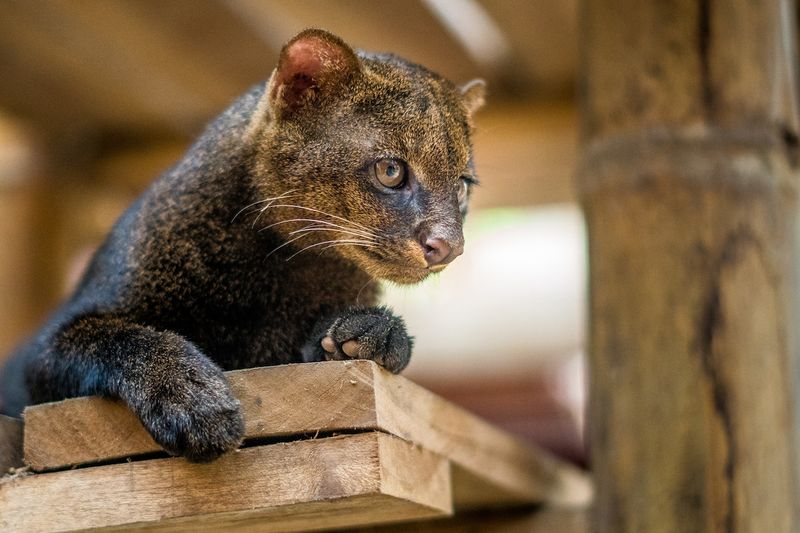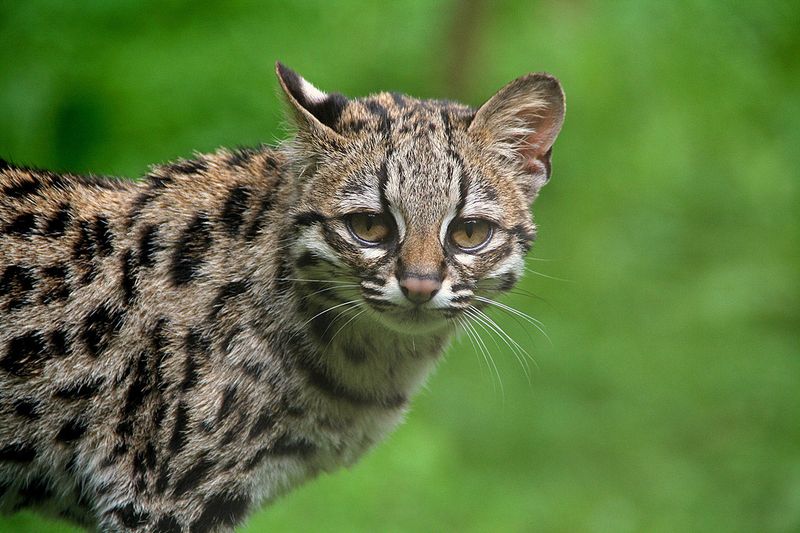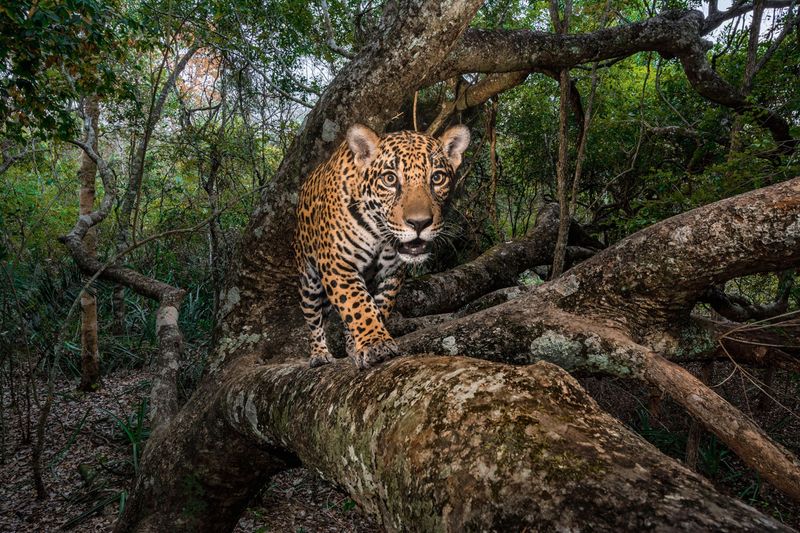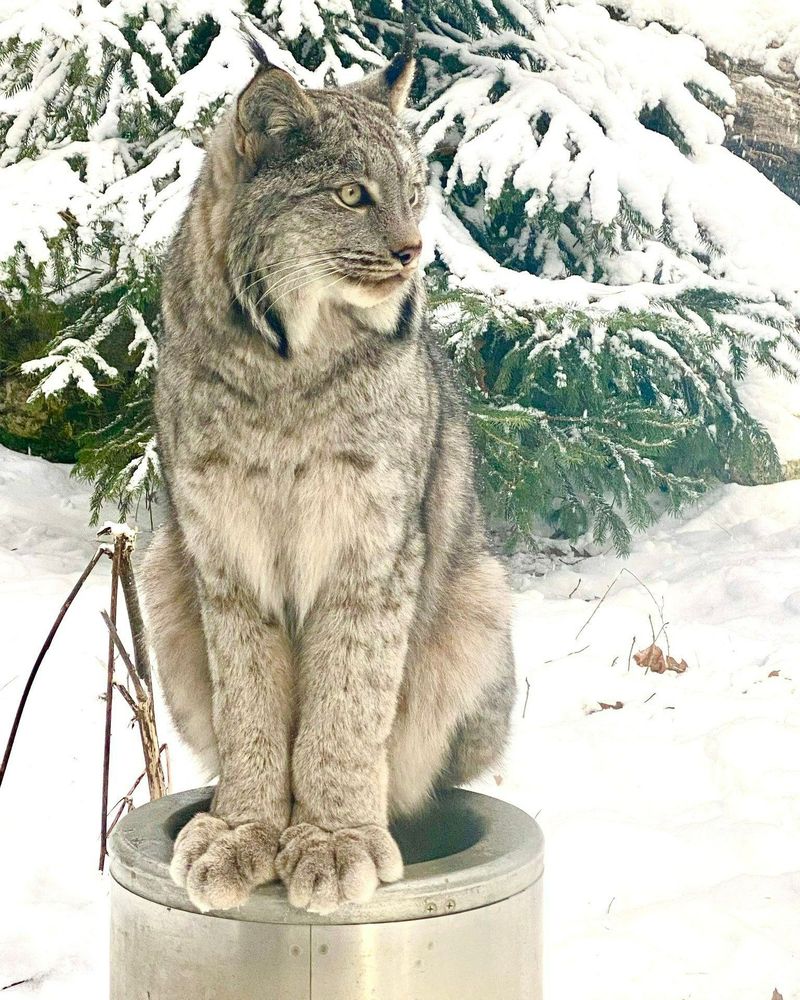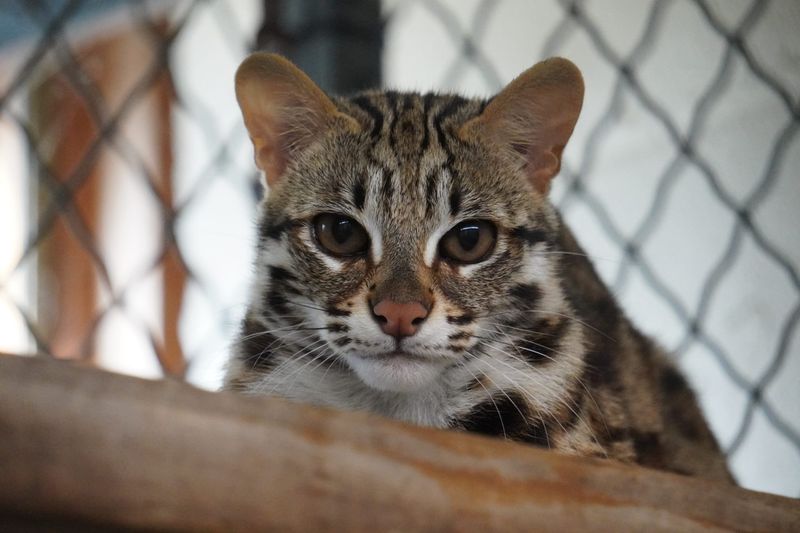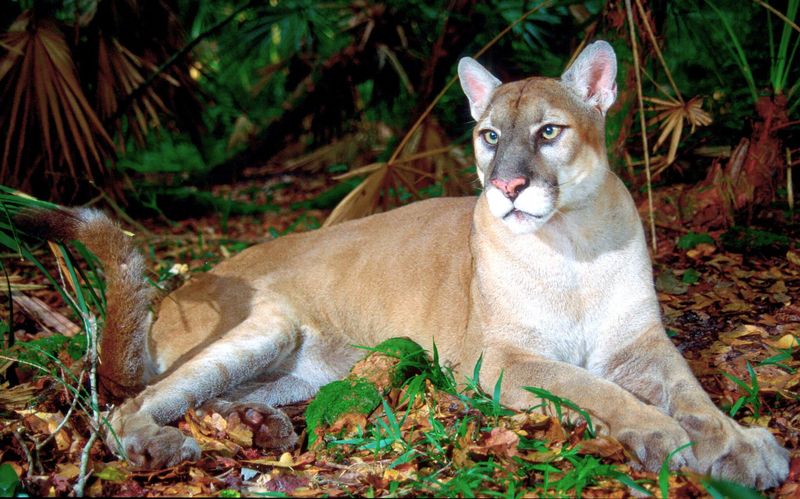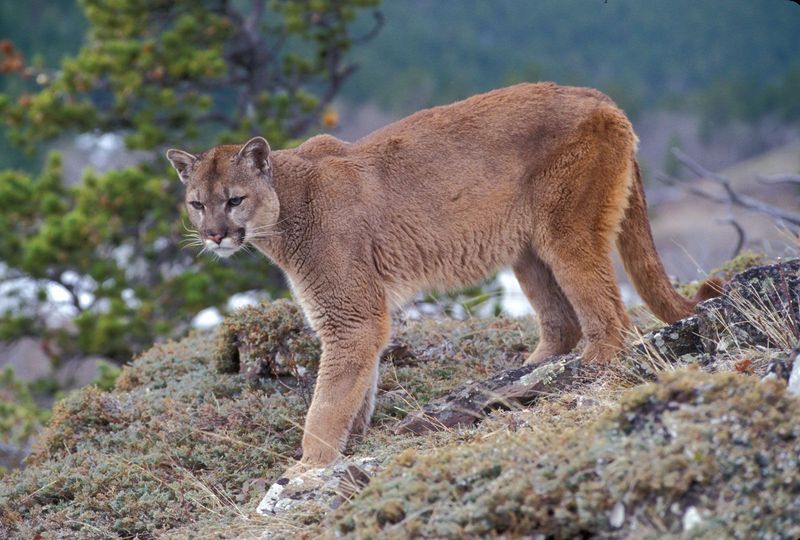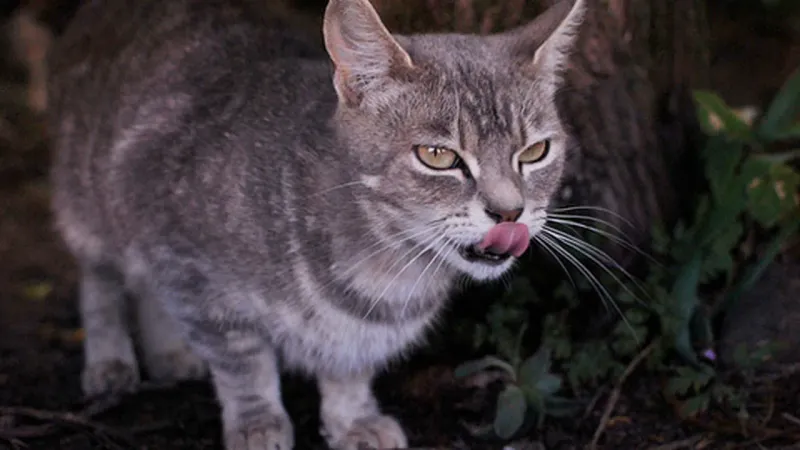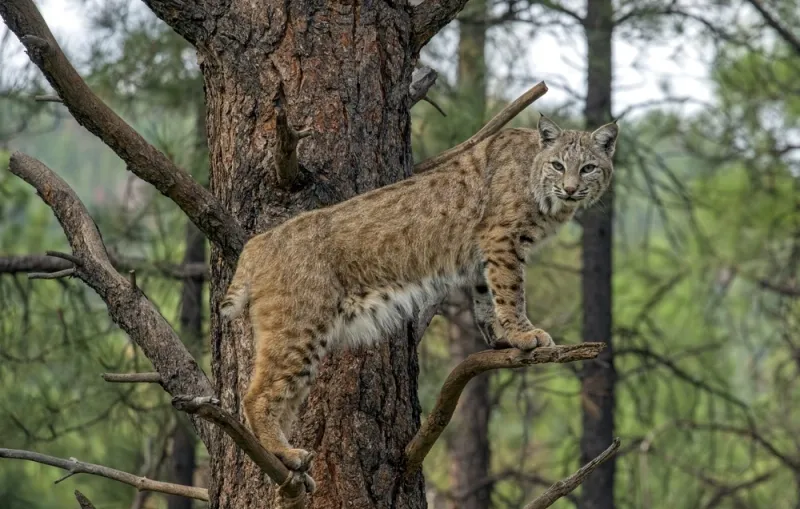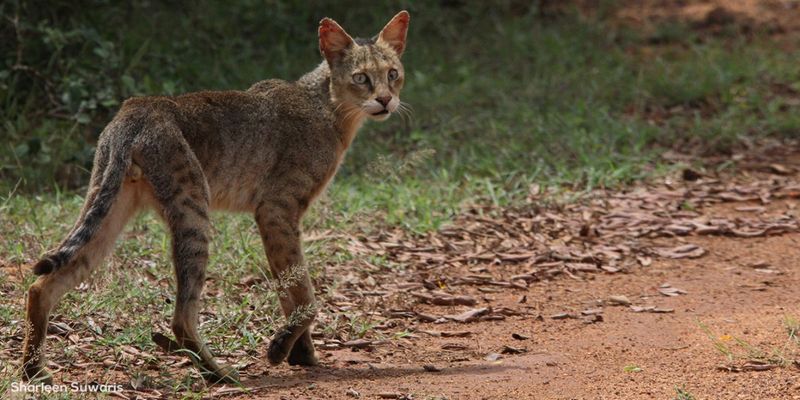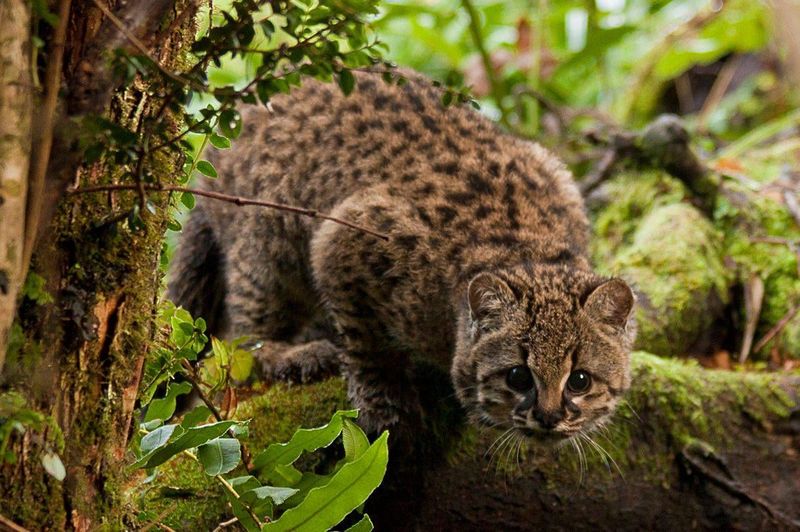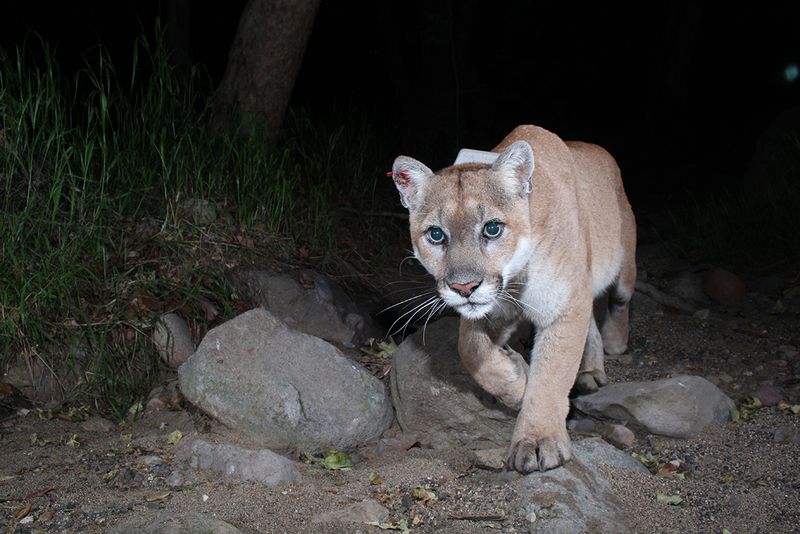📖 Table of Content:
North America hosts a diverse range of wild feline species, many of which thrive far from human view. These elusive creatures inhabit forests, mountains, deserts, and wetlands across the continent. Their presence often goes unnoticed, despite their importance to the balance of local ecosystems.
Among these wild cats are powerful hunters like the mountain lion and stealthy species such as the ocelot. Each plays a vital ecological role, helping regulate prey populations and maintain biodiversity. Their behaviors, habitats, and survival strategies reflect incredible adaptation to varied environments.
Some populations are declining due to habitat loss, road development, and other human activities. However, conservation efforts and legal protections have led to the recovery of certain species in recent decades. Ongoing awareness and action remain key to ensuring their continued survival.
1. Bobcat
Named for their stubby “bobbed” tails, these adaptable predators thrive across North America from forests to deserts. Twice the size of house cats, they sport distinctive spotted coats and tufted ears that enhance their hearing abilities. Bobcats are masterful hunters, primarily targeting rabbits and rodents but capable of taking down deer many times their size. Their powerful hind legs enable impressive leaps of up to 10 feet. Despite their widespread presence, bobcats remain largely unseen due to their secretive nature and primarily nocturnal habits. They’re one of the few wild cat species whose populations have remained stable despite human expansion.
2. Mountain Lion
Also known as cougars or pumas, mountain lions rank as North America’s largest wild cats. Their muscular bodies can stretch over 8 feet from nose to tail tip, with males weighing up to 220 pounds. These tan-colored predators possess incredible jumping power, clearing distances of 40 feet horizontally and 15 feet vertically. Unlike their roaring big cat relatives, mountain lions communicate through purrs, whistles, and distinctive screams. Once nearly eliminated from eastern states, these resilient cats are reclaiming former territories. Trail cameras increasingly capture images of mountain lions in areas where they haven’t been seen for generations.
3. Ocelot
Striking rosette patterns and gold-toned fur make ocelots among America’s most beautiful wild cats. Found primarily in Texas and Arizona, these medium-sized felines once ranged much farther north before habitat loss restricted their territory. Ocelots possess exceptionally large eyes that provide superior night vision for hunting under darkness. Their diet consists mainly of rodents, rabbits, birds, and reptiles caught with stealthy precision. Fewer than 50 wild ocelots remain in the United States today, placing them on the endangered species list. Conservation efforts focus on protecting crucial habitat corridors and reducing road mortalities that threaten their fragile population.
4. Jaguarundi
Often mistaken for otters or weasels due to their unusual appearance, jaguarundis stand apart from typical wild cats. Their elongated bodies, short legs, and small, rounded ears create a distinctive silhouette unlike any other North American feline. Coat colors vary dramatically between individuals, ranging from dark charcoal to rusty red. Unlike most cats, jaguarundis are primarily active during daylight hours, hunting birds, rodents, and reptiles. These rare cats maintain a tenuous presence along the Mexico-United States border, particularly in dense thornscrub habitat. Most Americans will never glimpse these secretive felines, which prefer areas with thick vegetation and minimal human disturbance.
5. Margay
Margays possess an extraordinary adaptation among North American cats – ankles that rotate 180 degrees, allowing them to run headfirst down trees. This remarkable ability makes them true arboreal specialists who spend most of their lives in the forest canopy. Slightly smaller than house cats, margays sport beautiful spotted coats similar to ocelots but with more delicate features. Their oversized eyes and enhanced night vision make them formidable nocturnal hunters. These cats occasionally appear in southern Texas, representing the northernmost edge of their primarily Central American range. Deforestation poses their greatest threat, as margays depend entirely on intact forest ecosystems for survival.
6. Jaguar
As North America’s only big cat with roaring capabilities, jaguars once roamed from California to Louisiana. Today, these powerful predators make rare appearances in Arizona and New Mexico, migrating north from Mexican populations. Jaguars hunt differently than other American cats, using their massive jaw strength to pierce the skulls of prey rather than delivering throat bites. Their distinctive rosette patterns contain central spots that differentiate them from similar-looking leopards. Motion-activated cameras occasionally capture male jaguars exploring the southwestern borderlands. Conservation groups work to protect potential habitat corridors that could allow these magnificent cats to reestablish permanent populations in the United States.
7. Canada Lynx
Built for northern winters, Canada lynx possess massive paws that function like natural snowshoes, allowing them to hunt effectively in deep snow. Their specialized diet revolves around snowshoe hares, creating a predator-prey relationship so intertwined that lynx populations rise and fall in direct response to hare numbers. Distinctive black ear tufts and facial ruffs give these medium-sized cats their characteristic appearance. Their thick, silvery-gray winter coats provide crucial insulation against subzero temperatures. Found across Alaska, Canada, and the northern continental United States, lynx face challenges from climate change as warming temperatures affect snowfall patterns and prey availability in their boreal forest habitats.
8. Leopard Cat
Few Americans realize that leopard cats occasionally appear on Alaska’s remote western islands, representing North America’s only connection to this primarily Asian species. These small, spotted felines likely arrived during periods when land bridges connected the continents. Smaller than house cats but with similar proportions, leopard cats possess distinctive dark spots and stripes against light backgrounds. Their semi-retractable claws and partially webbed feet help them navigate both terrestrial and aquatic environments. Alaskan leopard cats represent the easternmost extension of a species otherwise found across Asia. Their isolated population remains poorly studied due to the extreme remoteness of their island habitats.
9. Florida Panther
Florida panthers represent the last remaining breeding population of mountain lions in the eastern United States. Distinguished by a distinctive kink in their tails and a cowlick pattern in their fur, these critically endangered cats number fewer than 200 individuals. Genetic isolation led to health problems that nearly caused their extinction in the 1990s. Introduction of Texas mountain lions to diversify the gene pool has helped strengthen the population, though they remain vulnerable. These elusive predators require vast territories, with males patrolling ranges up to 200 square miles. Conservation efforts focus on protecting remaining habitat in southwest Florida while establishing wildlife corridors that allow panthers to expand their range northward.
10. Eastern Cougar
Officially declared extinct in 2018, eastern cougars once roamed forests from Maine to Georgia. These large cats fell victim to systematic predator elimination programs and widespread habitat destruction during American colonization. Historical records describe them as slightly smaller than their western counterparts, with somewhat darker coloration. Despite their official extinction, reported sightings continue across eastern states, fueling debate about possible remnant populations or western mountain lions expanding eastward. Some wildlife biologists believe the distinction between eastern and western cougars represented regional variations rather than true subspecies. Regardless, the loss of these apex predators dramatically altered eastern forest ecosystems through cascading effects on deer populations.
11. Feral Cats
While not native wild cats, feral domestic cats have established wild-living populations across North America, adapting to survive independently of humans. Many show physical changes after generations in the wild, including larger size, more muscular builds, and thicker coats. These cats form complex social groups when resources allow, contrary to the solitary nature of most wild felines. Their hunting skills remain impressive, with studies showing individual feral cats can take down over 1,000 small prey animals annually. Conservation biologists consider feral cats problematic invasive predators that threaten native wildlife, particularly birds and small mammals. Their ability to thrive in diverse environments makes them one of America’s most successful—and controversial—wild-living cats.
12. Mexican Bobcat
Mexican bobcats represent a distinct subspecies found along the United States-Mexico border, characterized by smaller size and more pronounced spotting than their northern relatives. Their desert adaptations include larger ears for heat dissipation and more efficient kidneys that require less water. These resourceful predators thrive in arid environments where other cats cannot survive. Their diet shifts seasonally, focusing on whatever prey remains available during drought conditions—from rodents and rabbits to birds and reptiles. Border wall construction has fragmented habitat for these cats, creating conservation concerns about population isolation. Research shows they require connected landscapes to maintain genetic diversity and access to water sources during extreme heat events.
13. Jungle Cat
Small populations of introduced jungle cats have been documented in Florida, likely released by exotic pet owners. Native to Asia and parts of Africa, these lanky, long-legged felines adapt readily to new environments, particularly wetlands and agricultural areas. Larger than domestic cats but smaller than bobcats, jungle cats display solid tawny-brown coloration with distinctive ear tufts. Their partially webbed feet make them excellent swimmers who readily hunt fish and aquatic birds. Environmental agencies monitor these non-native cats due to potential impacts on native wildlife. Their presence represents one example of how the exotic pet trade continues to introduce foreign species into American ecosystems with unpredictable consequences.
14. Kodkod
Unconfirmed sightings of kodkods occasionally emerge from southern Texas, suggesting possible range expansion from this South American species. Among the world’s smallest wild cats, kodkods weigh just 4-5 pounds with distinctive rounded ears and blotched coat patterns. These tiny predators specialize in hunting small rodents, birds, and reptiles, using remarkable agility to pursue prey through dense vegetation. Their climbing abilities rival those of margays, allowing them to hunt effectively both on the ground and in trees. While no verified populations exist in North America, wildlife biologists investigate reported sightings due to the species’ known ability to adapt to diverse habitats. Climate change potentially enables the northward expansion of traditionally tropical species.
15. California Mountain Lion
California’s mountain lion population represents a conservation success story amid the state’s extensive urban development. These adaptable predators maintain territories even in hills surrounding major cities like Los Angeles and San Francisco. Urban-dwelling mountain lions face unique challenges, including road mortality and exposure to rodenticides that accumulate in their prey. Wildlife crossings constructed over major highways help reduce fatal collisions and genetic isolation. Research using GPS collars reveals how these cats navigate fragmented habitats, sometimes traveling through residential areas under the cover of darkness. Their continued presence in one of America’s most populated states demonstrates the remarkable adaptability of these native wild cats.

